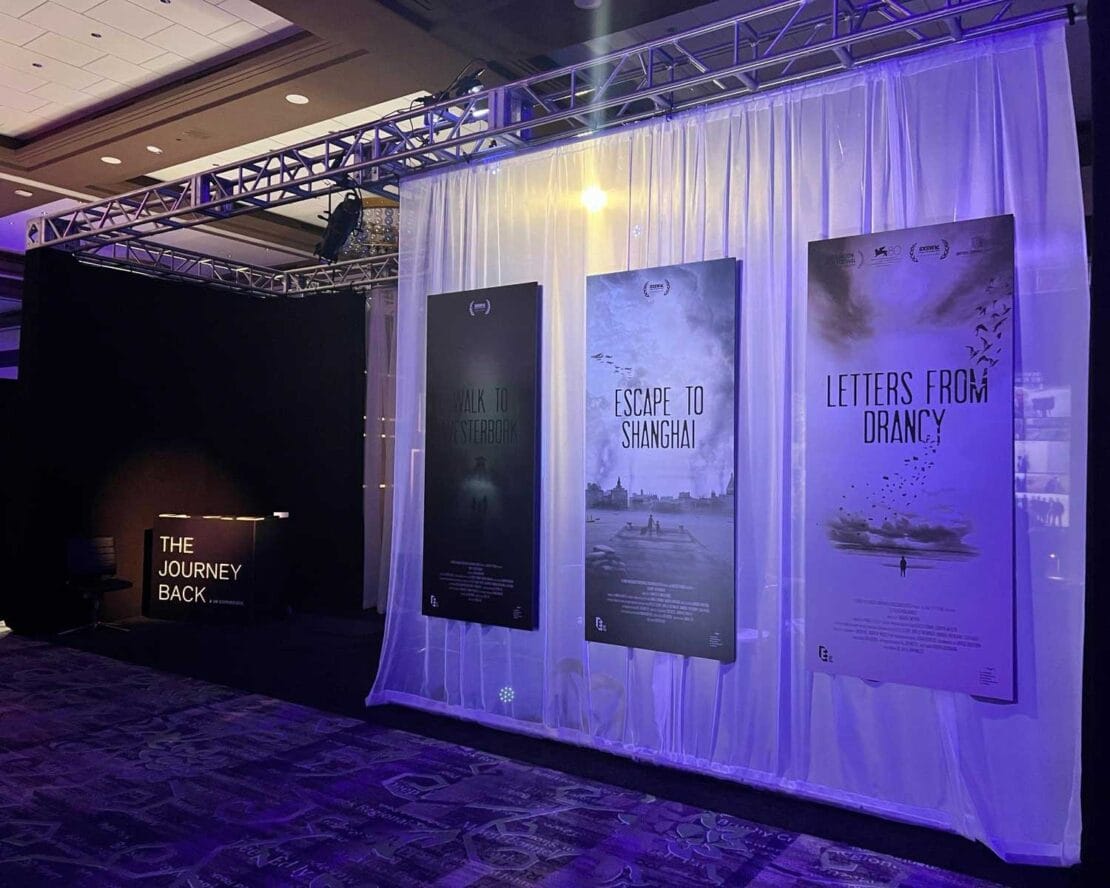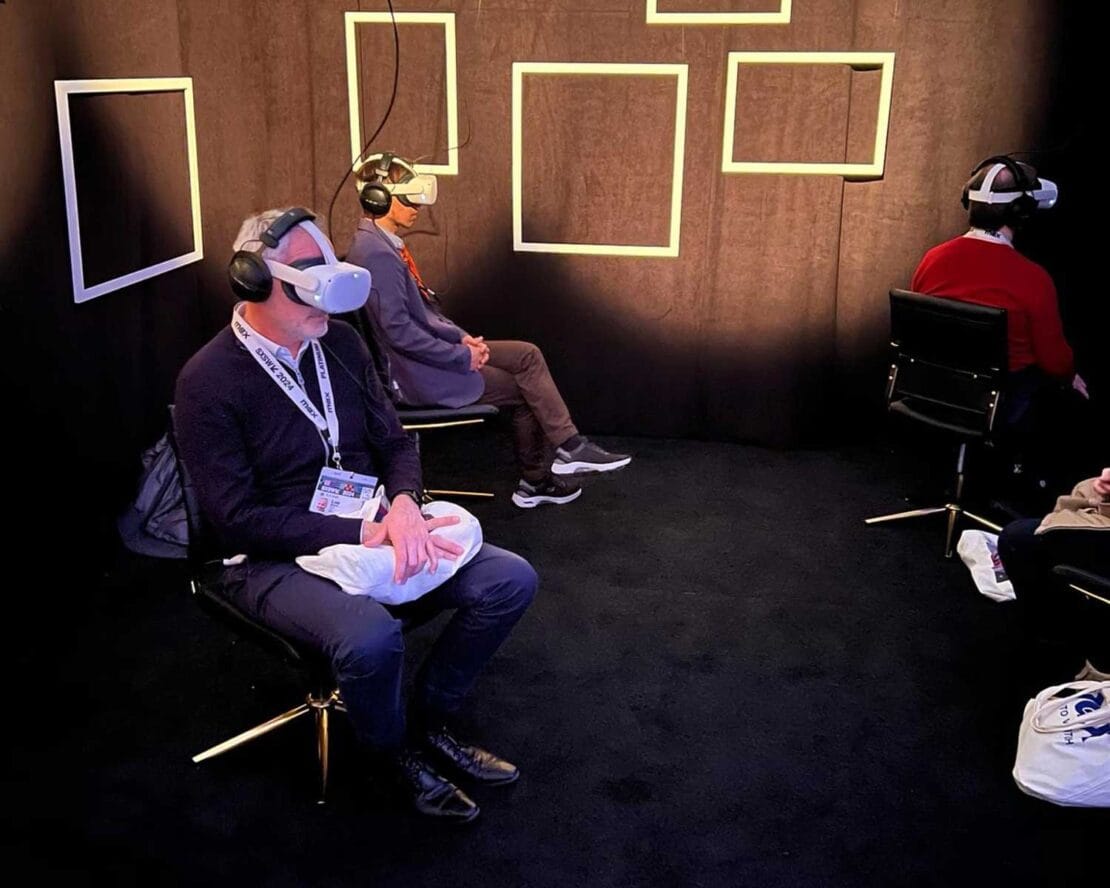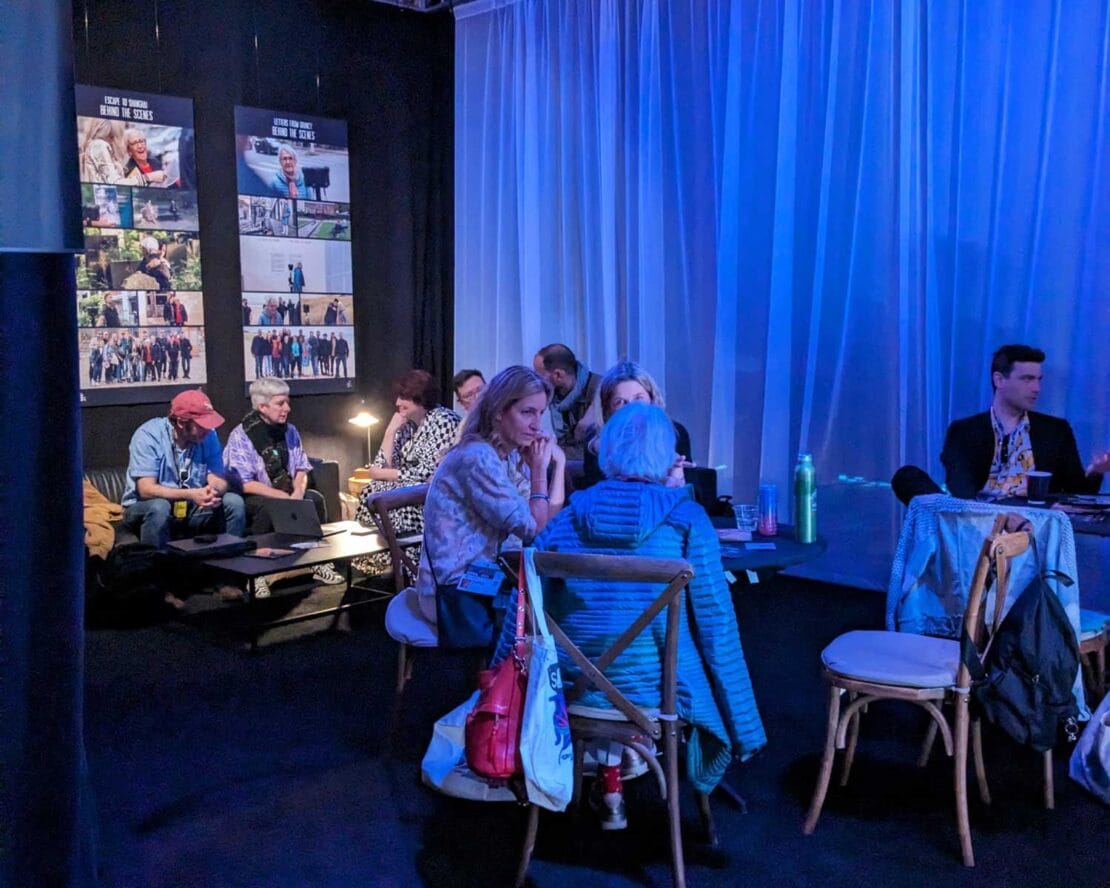The Story Behind The Journey Back: A VR Experience at SXSW
Ash Cowan
In August 2023, the Illinois Holocaust Museum became home to three poignant VR documentaries, each narrating the harrowing yet inspiring tales of Holocaust survivors Marion Deichmann, Rodi Glass, and Doris Fogel. Collaborating with VR directors Mary Matheson, and Charlotte Mikkelborg, as well as our own creative mastermind Darren Emerson, East City Films birthed three powerful films – “Letters From Drancy”, “Walk To Westerbork”, and “Escape To Shanghai”. These moving narratives found a new stage at the SXSW Festival in 2024, in an exhibition named “The Journey Back: A VR Experience”, where attendees were immersed in the survivors’ stories through an innovative blend of technology and emotion, leaving a lasting impact on all who ventured through this unforgettable journey.
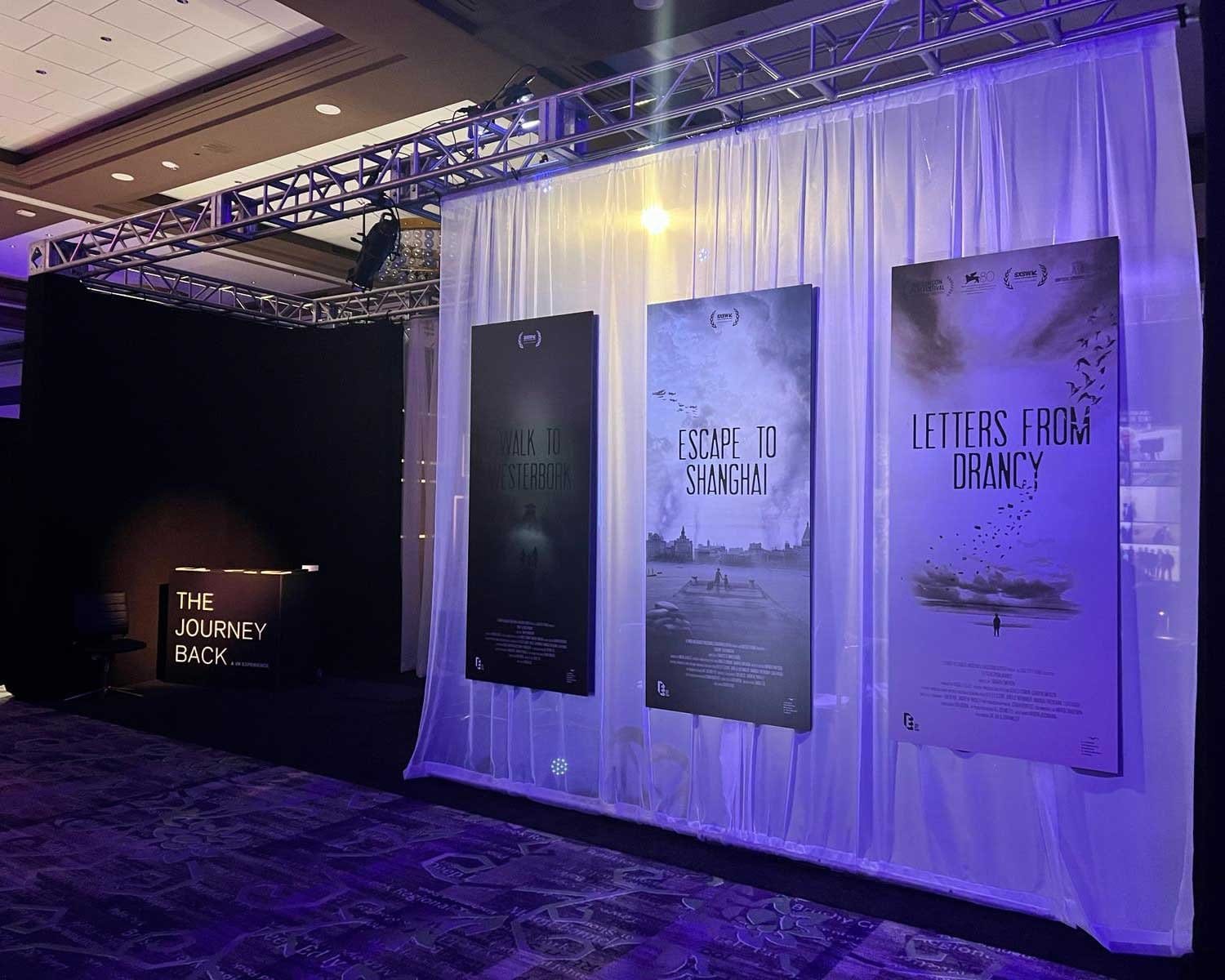
“The Journey Back: A VR Experience” booth
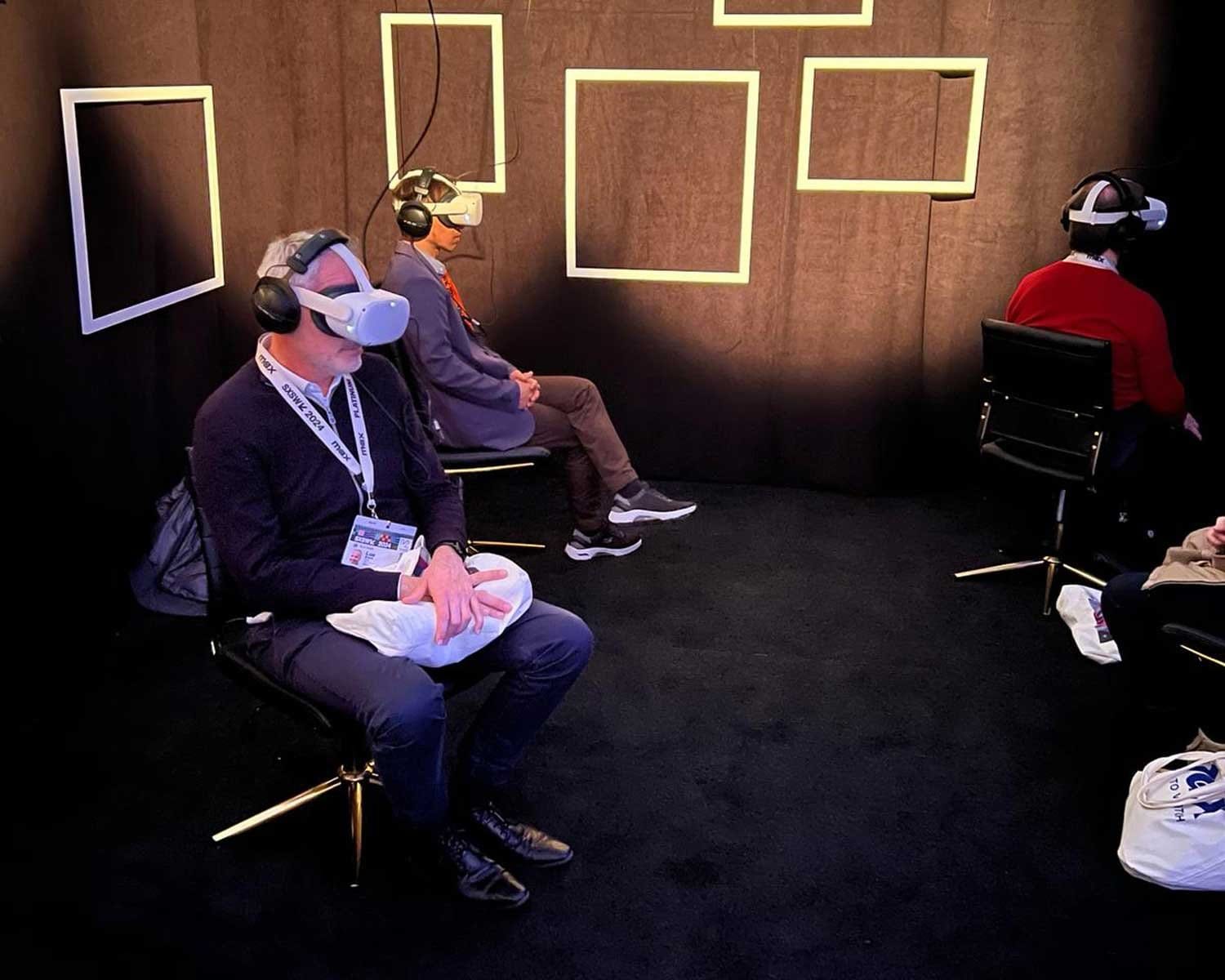
The VR Viewing Room
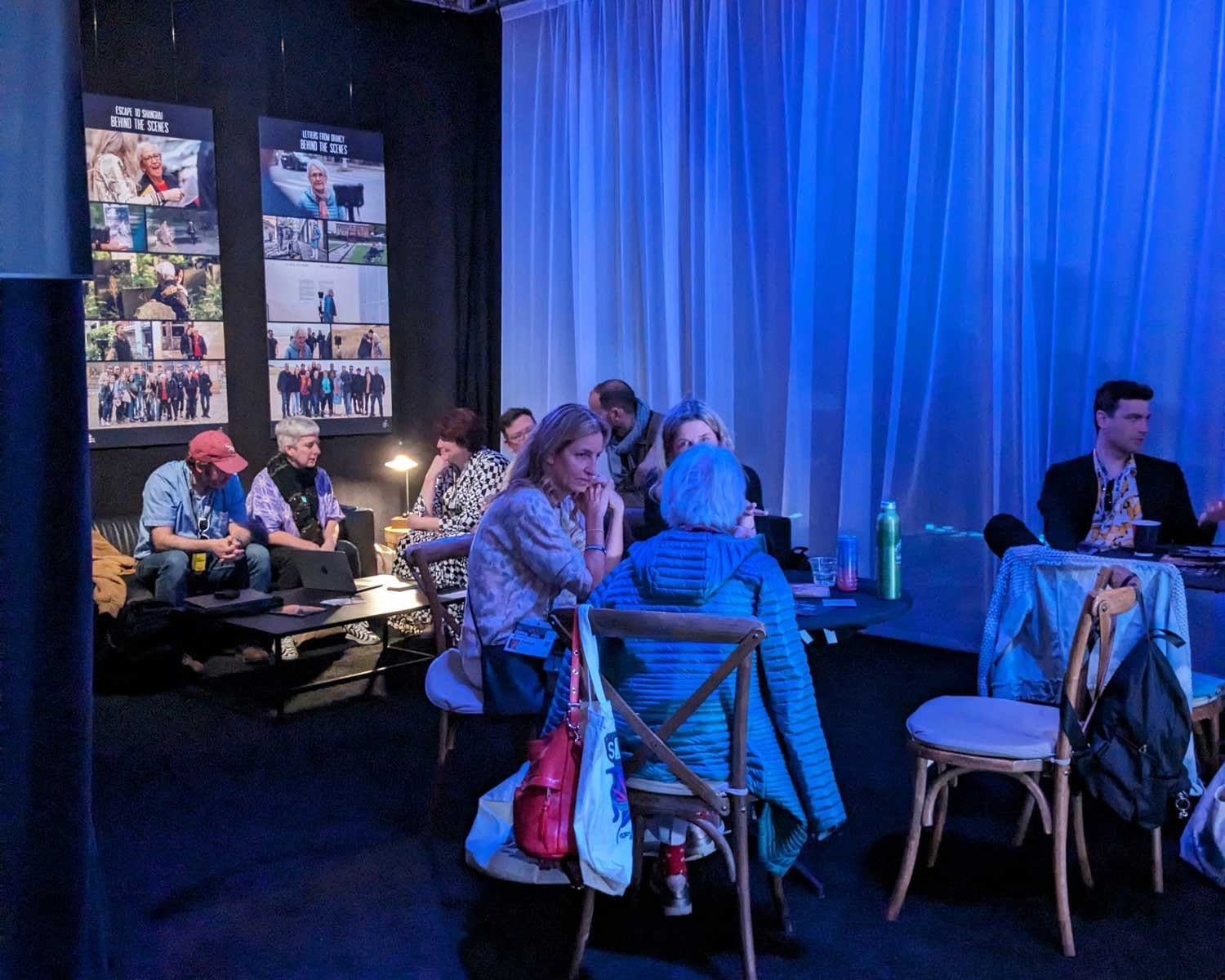
The Exhibition Area
From Illinois To Texas
A Unique Festival Experience
With support from Future Arts & Culture, British Underground, the Arts Council and the British Council, we were honoured to bring “The Journey Back” from Illinois to SXSW. The exhibition was not just about viewing; it was about participating in a moment of history, about stepping into someone else’s life and understanding their journey on a profoundly intimate level. The interactive nature of VR enabled attendees to engage with the narratives in a way that traditional mediums could not offer. It was this blend of empathy and innovation that made our exhibition resonate deeply with festival-goers, inviting them to not only witness but also partake in the legacy of these stories.
The Journey from Museum to Festival
The transition of our VR experience from the quiet contemplation of the Illinois Holocaust Museum to the dynamic energy of Austin and SXSW was a deliberate and thoughtful process. It required a reimagining of the presentation to fit the festival’s context while preserving the narratives’ integrity and emotional impact. The museum provides a solemn backdrop appropriate for reflection, which we honored and carried into the festival’s more interactive space. By adapting to the festival environment using the creative talents of designer Frances Norburn and VR technician Roderick Morgan of Trajectory Theatre, we ensured that the essence of the survivors’ stories was not lost but instead gained a new dimension of public engagement. This journey from museum to festival highlights our commitment to making these important historical narratives accessible to a wider, diverse audience. It underscores our ability to tailor educational content to different venues while maintaining its core message and emotional depth.
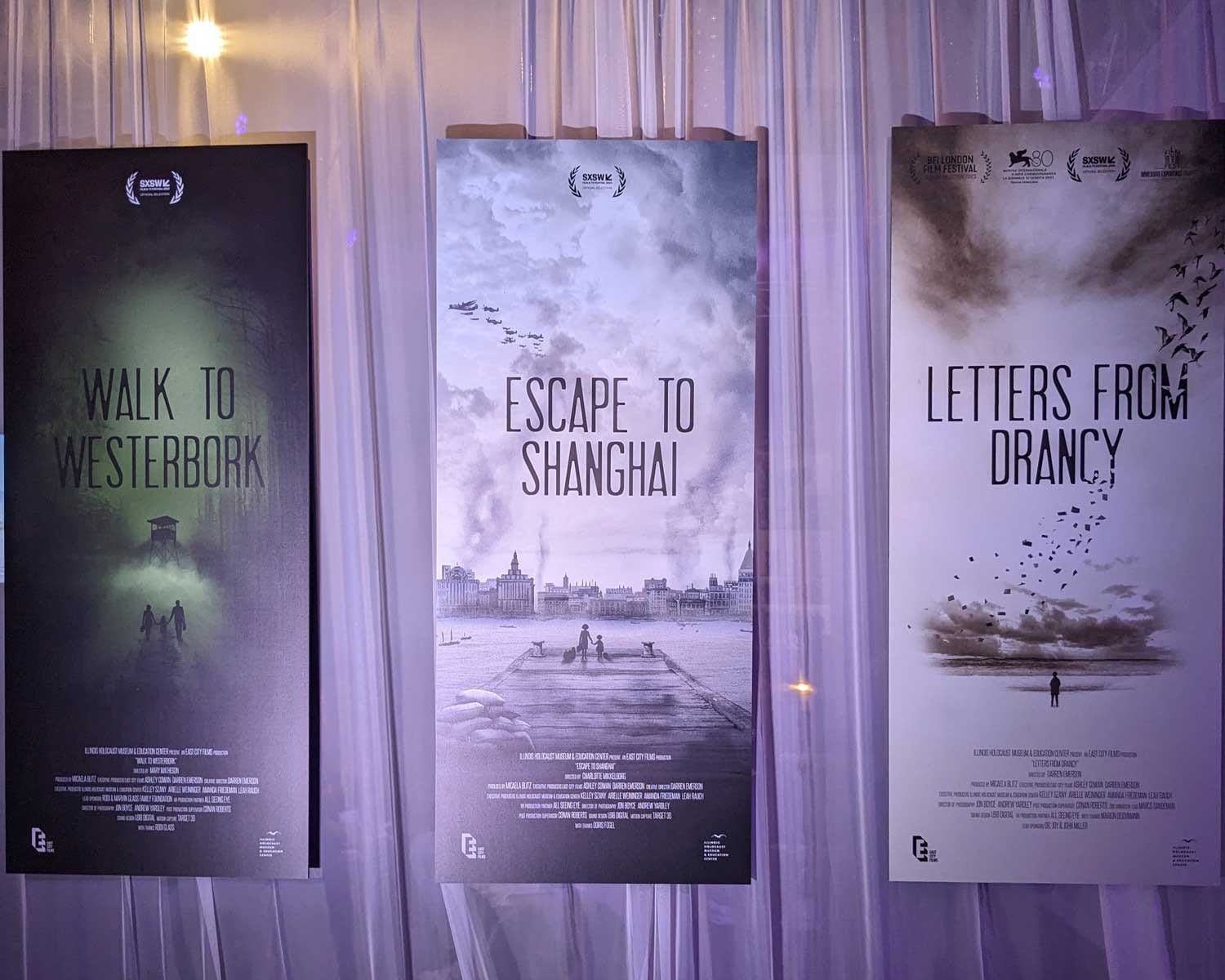
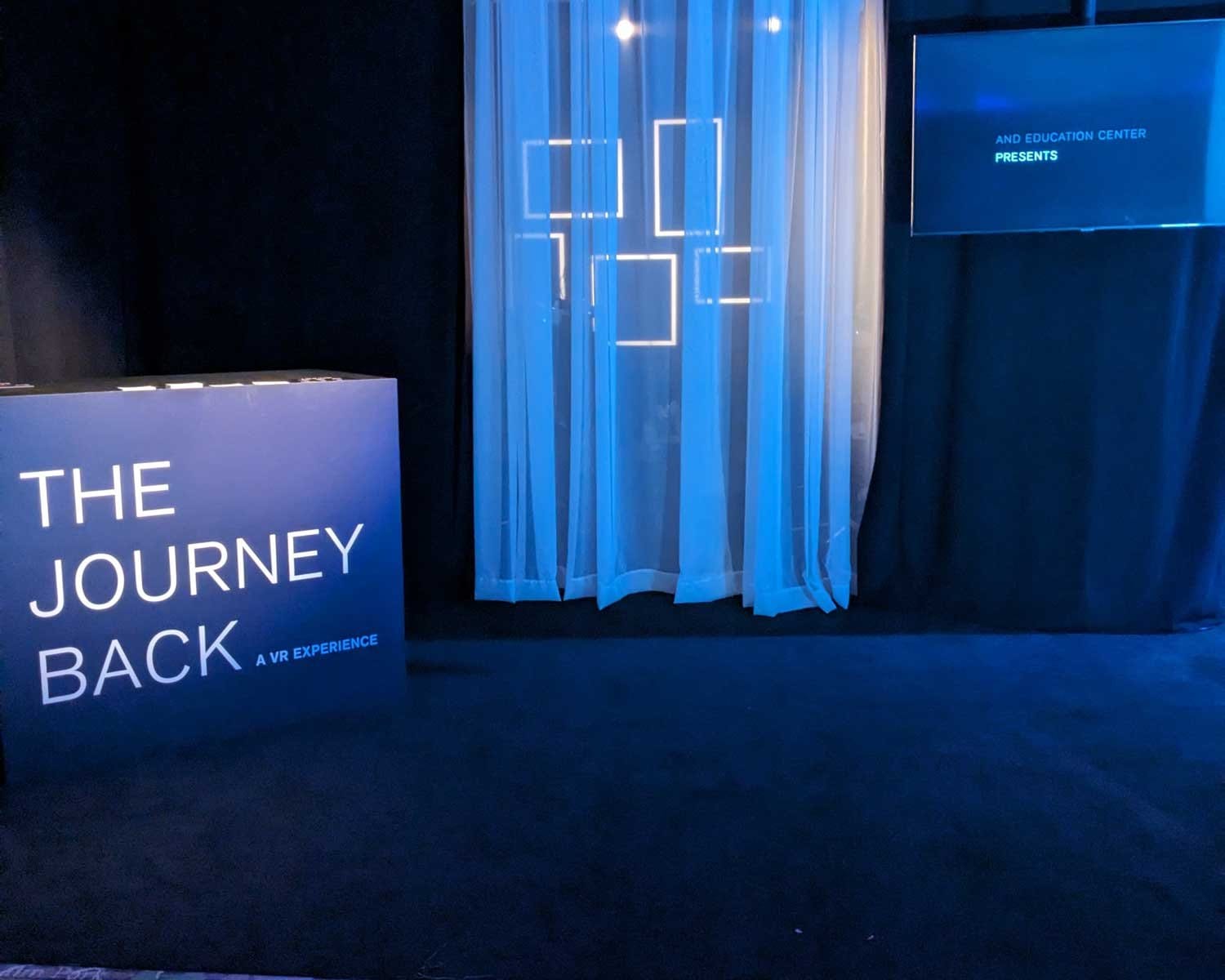
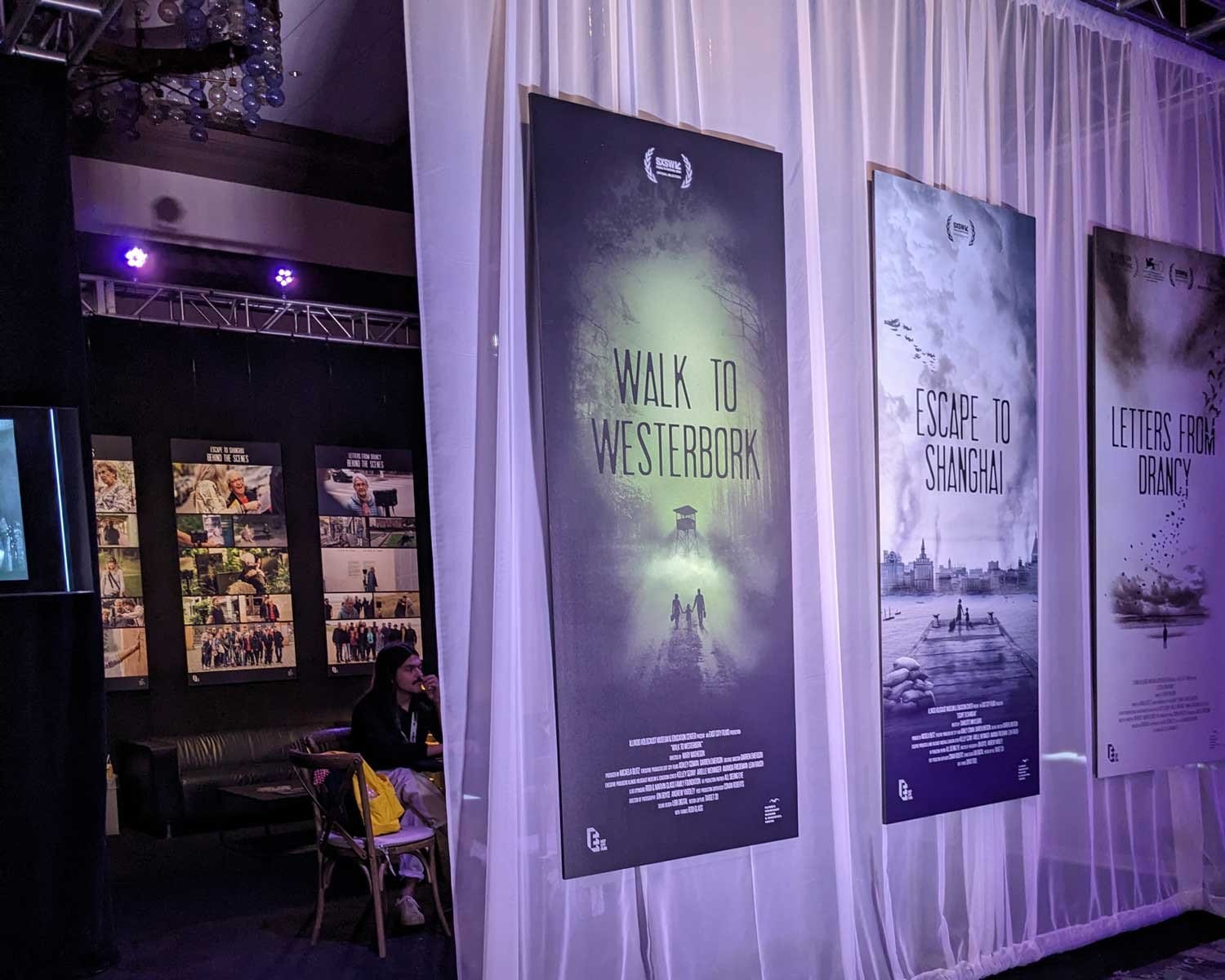
The SXSW Experience
Stepping into Our Booth: An Enchanting Journey
Upon entering our booth at SXSW, visitors were embraced by an atmosphere that transcended the typical VR festival experience. Our space was designed not just as a showcase but as a portal to the past. As attendees donned the VR headsets, they were transported to another time and place, enveloped by the stirring realities of the survivors. The environment we created was one of immersive storytelling where every visual and auditory element was carefully curated to complement the personal histories being shared. This journey through our booth was more than an exhibition; it was an invitation to walk alongside the survivors, to see through their eyes, and to feel the weight of their experiences. The result was an encounter that was both emotionally profound and intellectually enlightening, leaving a lasting impression on all who stepped into our world.
Welcome Area and Orientation Films
Before attendees ventured into the heart of “The Journey Back: A VR Experience”, they were welcomed into a specially designed area where they began their journey. This was not just an entry point; it was an integral part of the experience itself. Having been drawn in by the three film posters, beautifully designed by Hannah Moitt, a series of orientation films introduced the overarching narratives that featured in the three VR documentaries. This initial immersion in the stories and their contexts set the stage for the profound experiences that awaited them in the VR Viewing Room.
The VR Viewing Room
The VR viewing room at SXSW was the heart of our exhibit, where the convergence of technology, history, and human emotion was most palpable. Behind its creation was a deep dedication to authenticity and visitor immersion. The room was designed to be a space where one could engage with the VR experience in a controlled, introspective environment. We took great care to ensure that the technology was seamless, making the transition from the physical world to the virtual as smooth as possible. The viewing room was a sanctuary of sorts, a quiet corner in the midst of the bustling festival where people could connect with the stories of the survivors on a personal level. Inside, each user was granted the solitude to fully absorb the gravity of the narratives, fostering a private moment of reflection amidst a public event.
The Exhibition Space: A Personal Encounter
The final chapter of an attendee’s journey, our exhibition space, offered a transformative finale to the profound VR odyssey. As spectators stepped out from the viewing room, they were welcomed into an environment crafted to inspire contemplation and dialogue. Integral to our vision, this space served as a tangible extension of the virtual realms they had just traversed, providing a platform for emotional and intellectual synthesis post-experience. Within this setting, not only could visitors engage with artifacts and visuals connected to the experience they had just partaken in, but they were also granted the rare opportunity to meet and converse with Marion Deichmann and Rodi Glass in person. The very subjects of the documentaries were present to share their insights and answer questions about the films and their own remarkable narratives. This exchange added a profound layer of authenticity and connection, as attendees could directly relate their virtual discovery to the living history before them. The exhibition space anchored the VR journey in the palpable fabric of human experience, offering a holistic culmination that made certain the echoes of the survivors’ testimony were not only heard but also reverently internalised. Through this purposeful design, we forged an indelible and heartfelt denouement to “The Journey Back”.



Beyond The Exhibition
>Expanding the Dialogue: Panel Sessions and Audience Engagement
>”The Journey Back” catalysed a ripple effect of dynamic dialogues and cogitations that reverberated well past the buzzing atmosphere of the exhibition floor. These robust exchanges among attendees didn’t just celebrate our VR experience; they bore witness to its potency as a catalyst for meaningful discussions. Attendees grappled with themes of historical preservation, pondered the intersection of technology and education, and celebrated the indefatigable resilience of the human spirit. Departing from our showcase, guests carried with them not merely vivid memories of a VR journey, but a freshly kindled understanding of humanity’s tenacity in the face of trials. Survivor stories, anchored deeply in history, sparked vital contemporary conversations on the imperative of social justice and the sanctity of memory.
>To foster a deeper understanding, “The Journey Back” was complemented by a trio of thought-provoking panel discussions. These discussions provided a platform for further exploration into the topics that surfaced through the VR experience.
>The kick-off panel brought forth an enlightening discourse led by Ben Luxford of the BFI, featuring Kelley Szany of the Illinois Holocaust Museum, Myriam Achard from the Phi Centre, and Ulrich Schrauth from the BFI London Film Festival. “New Forms of Business; Making Immersive a Reality” delved into the intricacies of permanent VR exhibitions, providing valuable insights into their success stories and lessons learned from less favorable outcomes.
>In a subsequent presentation, hosted conjointly by Future Arts & Culture and British Underground, attendees heard from the very architects of the films — Executive Producer Ashley Cowan and directors Darren Emerson, Mary Matheson, and Charlotte Mikkelborg. They openly discussed the creative process and the flourishing impact the films had, not only in the museum but also across educational institutions in Illinois.
>The concluding panel discussion was titled “Bearing Witness: The Future of Holocaust Memory Through Immersive Technology”. Here, an emotional dialogue ensued with Kelley Szany, Darren Emerson, and the survivors themselves, Marion Deichmann and Rodi Glass. The raw and heartfelt exchange engrossed the audience, culminating in an emotive standing ovation. These panel sessions didn’t just complement the conversations started by “The Journey Back” but significantly amplified its resonance within the eclectic bustle of SXSW. Through these extended interactions, our success was magnified, evident not solely in the quantity of our audience but in the depth and permanence of the conversations that transpired.
>East City Films & Museum Representatives: A Meaningful Collaboration
>The collaboration between East City Films and the Illinois Holocaust Museum has been foundational to “The Journey Back’s” resonance beyond the festival. This partnership has represented a fusion of historical stewardship and innovative storytelling. Museum experts provided the factual backbone and poignant artifacts that added depth to the VR experience, while our team at East City Films translated these elements into compelling narratives. Together, we ensured that the survivors’ stories were not only told with accuracy but also with the dignity and impact they deserved. The museum’s mission to educate and our commitment to immersive storytelling has created a synergy that extends the reach of these important stories. This meaningful collaboration has allowed us to build a bridge from the past to the present, fostering understanding and empathy in ways that neither could achieve alone.
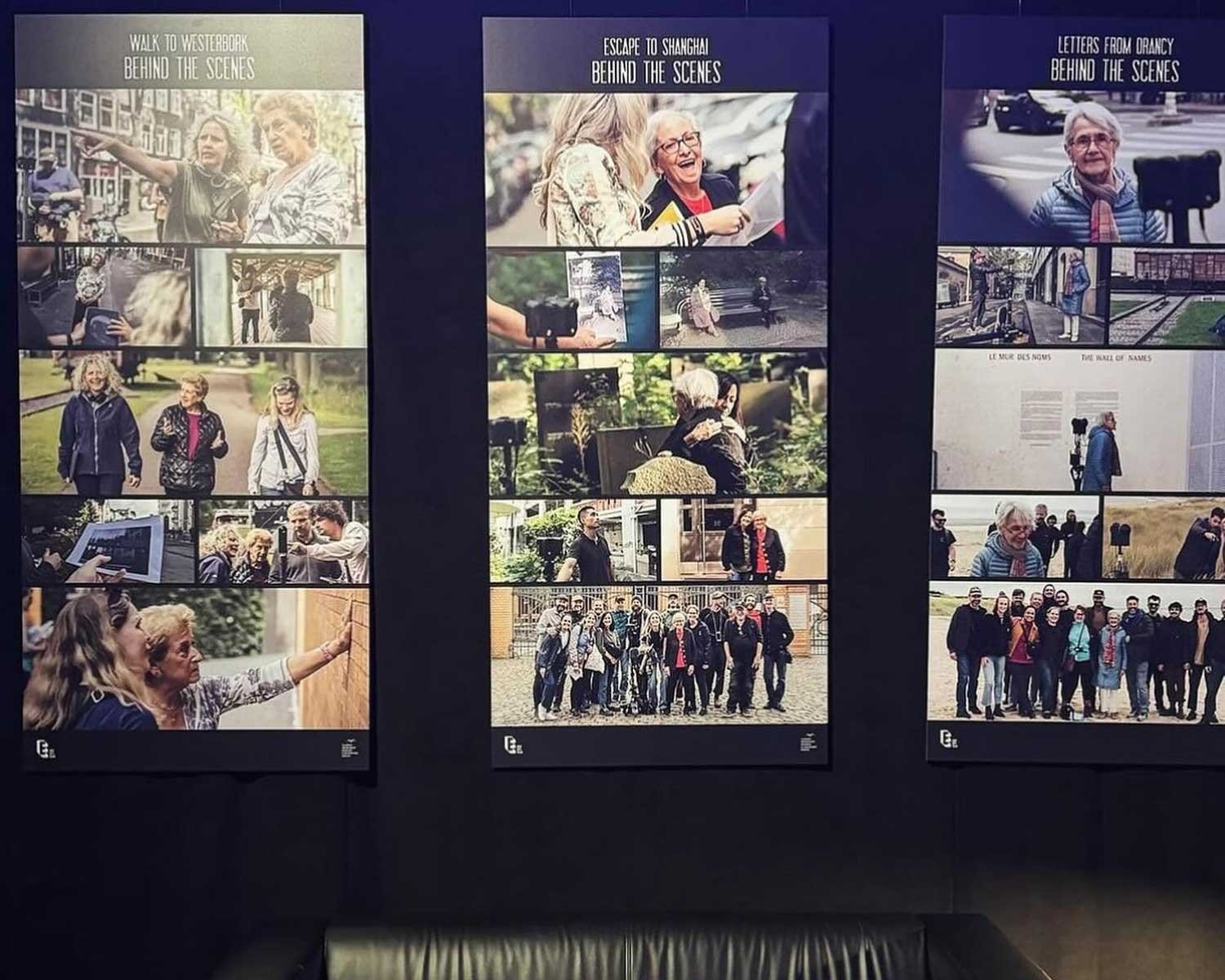

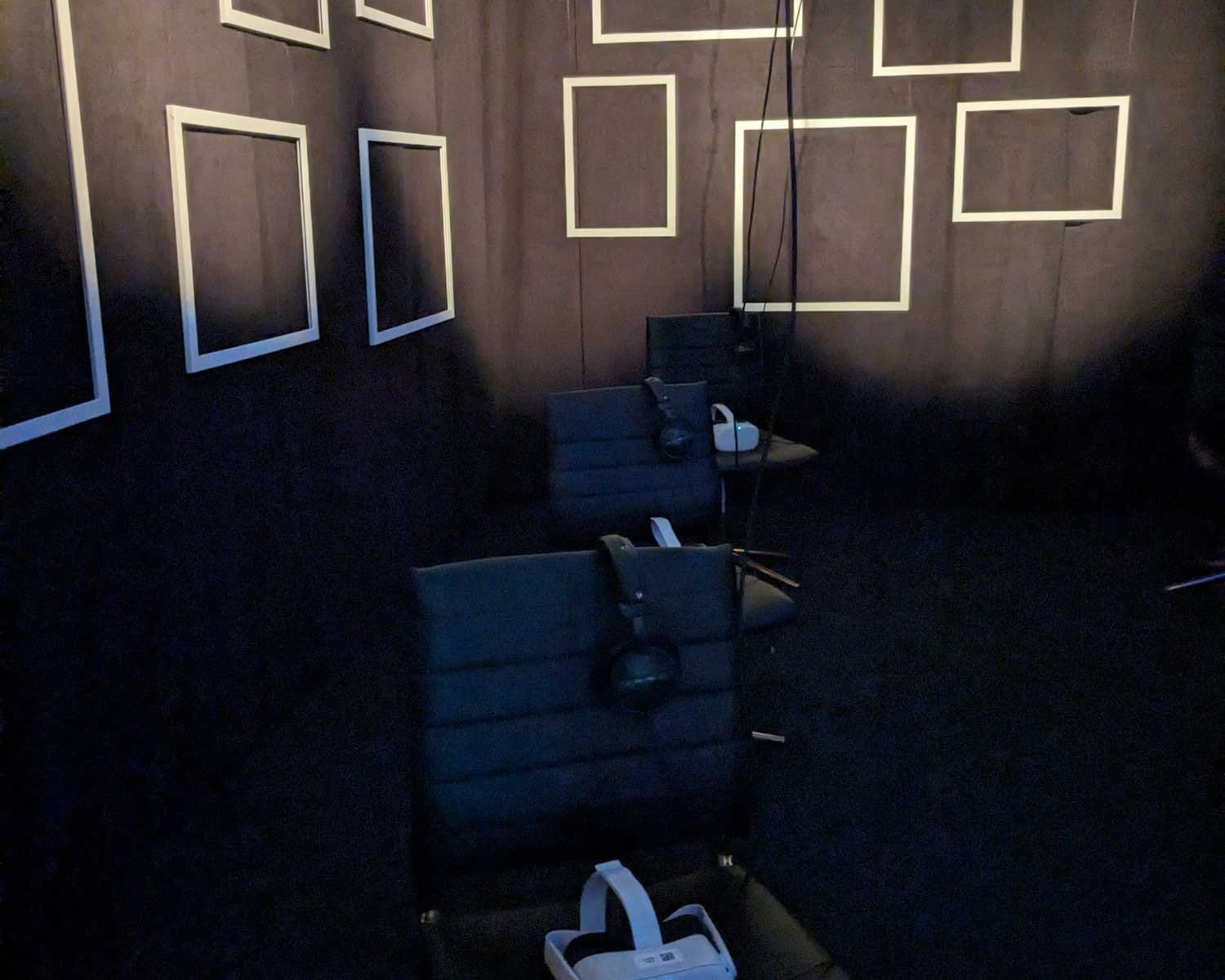
Crafting the Future of VR Exhibitions
>A Sold-Out Success
>Our showcase at SXSW was a triumph, with slots selling out and the buzz around our VR experience palpable. This success was not only a milestone for East City Films but a significant moment for the museum and the industry as a whole. It demonstrated a hunger for content that combines historical significance with cutting-edge technology. The sold-out sessions confirmed that audiences are ready to embrace VR as a medium for serious documentary storytelling. The overwhelming response has encouraged us to continue pushing the boundaries of what’s possible in VR exhibitions, exploring new stories that demand to be told. This success has also affirmed our belief in the potential of VR to educate and inspire, establishing it as a formidable tool in the landscape of immersive experiences.
>Creating a Blueprint for Future VR Exhibitions
>The overwhelming success of “The Journey Back: A VR Experience” at SXSW has set the stage for the future of VR exhibitions. We are now in a position to create a blueprint that other creators and institutions can follow. This template emphasises the importance of narrative-driven content, the integration of sensory elements, and the creation of spaces that encourage reflection and discussion. By sharing our approach, we aim to inspire and guide future VR experiences that are equally impactful and innovative. Our goal is to foster a community of VR storytellers who are not only skilled in the art of immersive technology but are also committed to using this medium to shed light on important issues. With this blueprint, we are charting a course for VR exhibitions that are not only technologically advanced but also culturally and historically significant.
